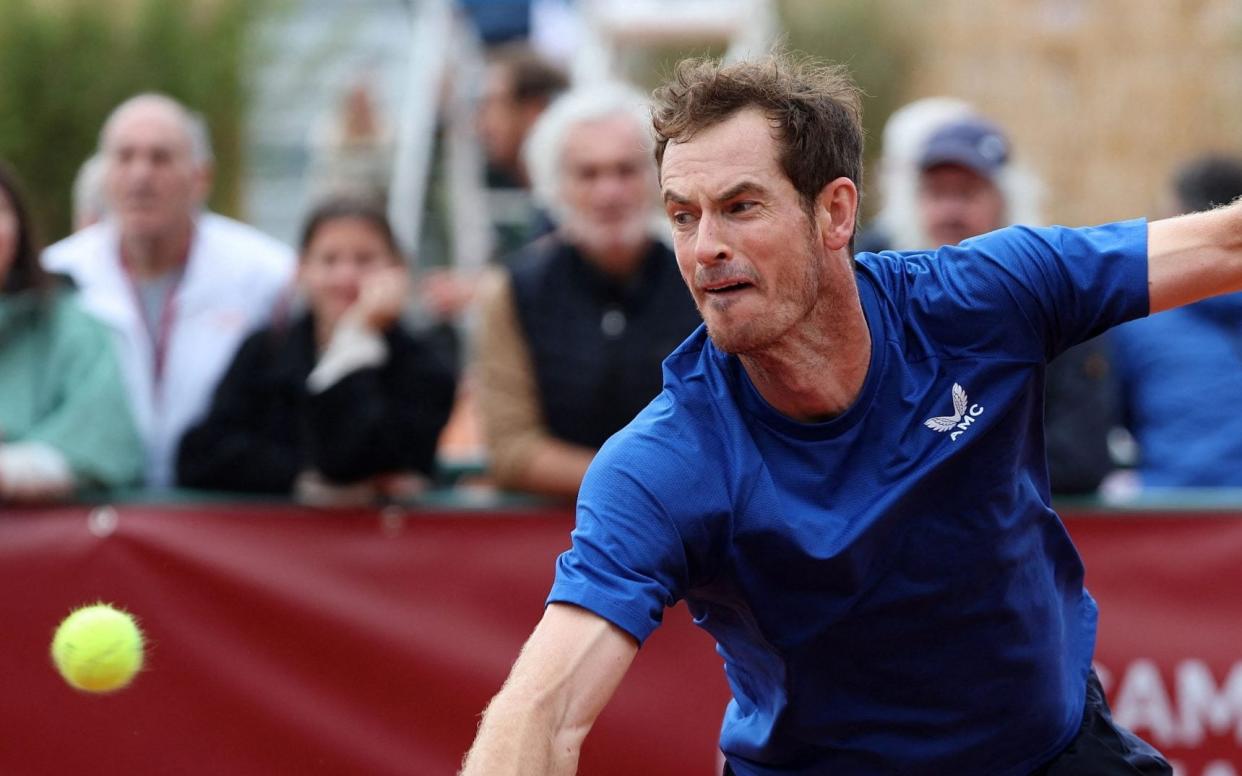Don't be fooled by Andy Murray's 'fatigue' – he thinks he can win Wimbledon

Andy Murray has withdrawn from next Sunday's French Open in order to focus on the real meat of his season: the grass-court swing, and Wimbledon in particular.
While the official reason given is "fatigue", Murray's strategy this year is all about making a deep run at SW19. By sacrificing the last event of the clay-court swing, he will give himself extra time to work on specific grass-court skills.
It might seem strange to some, but even as a battered 36-year-old with a metal hip, Murray still thinks he can win Wimbledon. Grass remains baffling to many players, especially those brought up on Mediterranean clay courts, who tend to come unstuck against someone who can slice, glide and volley.
As a two-time Wimbledon champion, Murray is very much an expert on grass – one of the few remaining in a landscape that has been dominated by Novak Djokovic in recent years. Given a favourable draw, and a co-operative body, he could do some real damage on Centre Court this summer.
Although the decision makes plenty of sense, Murray will not have come to it easily. Speaking to reporters in Madrid last month, he said: "I would like to play [the French Open] just purely because I don't know if I'll get another opportunity to play there again. Whilst I feel fit and healthy, I would like to give it a go.
"But I also have ambitions of competing for Wimbledon titles," Murray added. "I know that sitting here today that probably doesn't sound realistic, but I do believe that that's a possibility. It's impossible to say what the right thing to do [about the French Open] is."
For all his many qualities as an athlete, Murray has always found it extremely difficult to make up his mind about scheduling. His plans probably oscillated along with his form during a curious clay-court swing in which he suffered first-round exits at four events while winning the other – a 175-point Challenger in Provence.
In the end, Murray's 6-3, 6-0 shellacking at the hands of old friend and foe Stan Wawrinka on Wednesday probably settled the issue. He must have felt that another ten days of clay-court preparation ahead of the French Open would be a waste of valuable time, given his remote prospects of reaching the second week in Paris, when he could be collecting grass stains on his trainers instead.
In fact, that second week of the French Open also coincides with the Surbiton Challenger, which will probably be his next event. Last year, he reached the semi-finals in Surbiton, before beating both top seed Stefanos Tsitsipas and eventual Wimbledon runner-up Nick Kyrgios on the way to the final in Stuttgart.
Those tournaments provided further evidence that grass – where Murray has 82 per cent of his matches, as opposed to 75 per cent on hard courts and 69 per cent on clay – is his best surface. But an abdominal injury forced him to pull out of last year's Queen's, draining his momentum, and he was then eliminated in the second round of Wimbledon by 20th seed John Isner.
Here is another of Murray's key objectives in the next month: to improve his ranking by ten spots or so from its present position of No 42, and thus to earn a spot among the 32 Wimbledon seeds. Otherwise, he could come in with the perfect preparation, only to land Djokovic in the first round.
He should creep up one place on Monday in any case, thanks to other results in Rome over the past few days. Despite the baffling inconsistency of his season – which has delivered the title in Provence and a final in Doha, as well as six first-round exits in all – No 41 will represent his highest position since he was first forced off the tour by an arthritic hip in 2017.
His progress may seem halting, especially by the standards of the man who won 23 straight matches at the end of 2016 to cement his position as world No1. But as long as the graph is pointing upwards, however gradually, he will remain motivated to continue.
The grass-court season represents his best chance to make significant gains on the rankings ladder. And to bestride the Centre Court stage like it was 2013. Even if it means missing one of the other four slams along the way.

 Yahoo News
Yahoo News 
